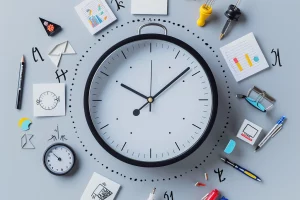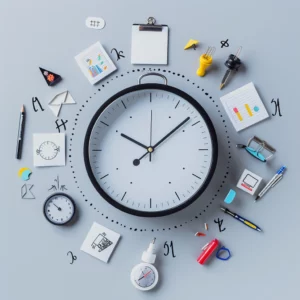Ever feel like your brain’s playing Jenga with information, and it’s one wrong move away from collapsing? Enter chunking – the memory superhero you’ve been waiting for. If you find yourself struggling to memorize large amounts of information, the chunking memory strategy might just be the solution you’ve been looking for.
Chunking is a memory technique where you break down large amounts of information into smaller, more manageable pieces or “chunks” that are easier to remember. In this article, we’ll explore the science behind chunking, how to apply it in your daily life, examples of chunking, its benefits, common mistakes to avoid, future implications, case studies, and how to supercharge it by teaming up with other memory techniques for maximum results.
Table of Contents
ToggleThe Science Behind Chunking: How It Helps You Remember More Information
Ever felt like your brain’s inbox is perpetually overflowing? Studies have shown that the human brain can hold a limited amount of information at one time. This limitation can be increased by breaking down large amounts of information into smaller chunks. Yes, you’re right; chunking is here to declutter. Doing this can reduce cognitive load and make it easier for your brain to process and remember the information. Think of it as a mental cheat code that turns overwhelming data into a neatly organized playlist.
Chunking allows you to create meaningful connections between pieces of information, making it easier to remember. For example, try to remember a phone number as a single string of digits. Nightmare, right? Breaking it down into smaller groups or chunks, like a phone number or a credit card number, can make it easier to remember. Your brain dances through these smaller chunks effortlessly, making recall a breeze.
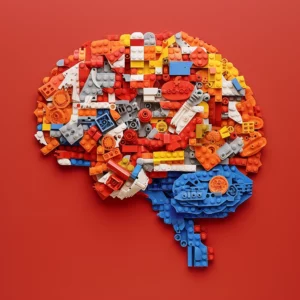
Chunking isn’t just for numbers. It can also be applied to other types of information, such as text, lists, or anything else that gives your brain a workout. Breaking down a large block of text into smaller paragraphs or sections makes it easier to read and retain the information.
Presentations or speeches looming like a dark cloud? Chunking is your sunshine. When it comes to memorizing speeches or presentations, you can use chunking to help you remember key points or ideas. This can be done by breaking the speech or presentation down into smaller sections and focusing on each section individually. This way, you can remember each category as a single unit and recall the points more easily. Overall, chunking is a powerful tool that can help you improve your memory and cognitive abilities. It feels as easy as reciting your favorite lyrics.
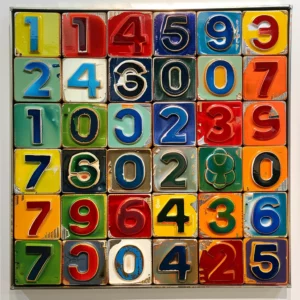
Chunking isn’t just for numbers. It can also be applied to other types of information, such as text, lists, or anything else that gives your brain a workout. Breaking down a large block of text into smaller paragraphs or sections makes it easier to read and retain the information.
Presentations or speeches looming like a dark cloud? Chunking is your sunshine. When it comes to memorizing speeches or presentations, you can use chunking to help you remember key points or ideas. This can be done by breaking the speech or presentation down into smaller sections and focusing on each section individually. This way, you can remember each category as a single unit and recall the points more easily. Overall, chunking is a powerful tool that can help you improve your memory and cognitive abilities. It feels as easy as reciting your favorite lyrics.
How to Apply Chunking in Your Daily Life: Tips and Techniques
Ready to sprinkle some chunking magic into your daily routine? Here are the different ways to apply the chunking memory strategy in your daily life:
1. Mnemonics Devices
These are memory aids that help to reduce cognitive load by creating a meaningful association between information and an image or phrase. if you need to remember a shopping list, you can associate each item on the list with a room in your house: picture eggs in the kitchen, bread in the pantry – your shopping list becomes a mental map.
2. Mind Maps
These visual representations of information can help you see and make connections between different pieces of information. Visualize your thoughts. Connect the dots between different ideas. It’s like a roadmap for your brain. Mind maps can be particularly useful for studying, brainstorming, and organizing your thoughts.
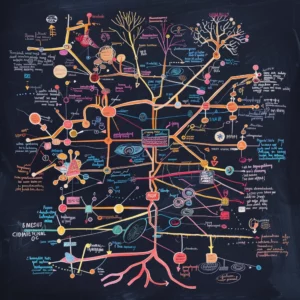
3. Breaking down larger tasks
This is an effective way to apply chunking in your daily life. If you have a big project to complete, you can break it down into smaller tasks and focus on completing one task at a time. It’s like turning Mount Everest into a series of scenic hikes. This can help to reduce overwhelm and increase productivity.
4. Use acronyms
Creating an acronym for a list of items or information can make it easier to remember. For example, using the acronym HOMES to remember the names of the Great Lakes (Huron, Ontario, Michigan, Erie, Superior).
5. Break information down into related categories
When trying to remember a lot of information, it can be helpful to group related items together. For example, if you’re trying to memorize a list of vocabulary words, you could group them by category. Whether it’s animals, food, household items, etc, it’s like sorting your mental closet.
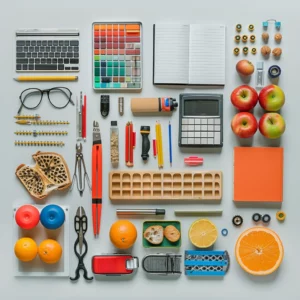
6. Use repetition
Repeat, repeat, repeat. Your brain loves the familiar. Repetition is a powerful tool for memory retention. By repeating information in small chunks, you can increase your chances of remembering it. For example, if you’re trying to learn a new language, repeating new vocabulary words in small groups can help you to remember them.
7. Create a story
Creating a story incorporating the information you’re trying to remember can make it more memorable. For example, if you’re trying to remember historical events, you could create a story that weaves together the different events and their significance. Turn dry facts into a gripping tale, and even the most boring historical events become characters in your mental movie, making them unforgettable.
8. Use visualization
Picture it. Literally. Visualization can be a powerful tool for memory retention. Creating mental images of the information you’re trying to remember can help to make it more memorable. If you’re trying to remember a person’s name, you could create a mental image of them holding a sign with their name on it.
The Benefits of Using Chunking in Learning and Productivity
Why bother with chunking? Because it’s a game-changer. Chunking has many benefits when it comes to learning and productivity. Some of the main advantages include:
- Improved memory and recall: Breaking down information into smaller chunks can make it easier for your brain to process and remember the information, leading to better retention and recall.
- Reduced cognitive load: By reducing the amount of information you need to process at one time, chunking can help reduce mental strain on your brain, leading to improved focus and productivity.

- Better understanding of complex information: Breaking down complex information into smaller, more manageable chunks can help you to identify patterns and connections between different pieces of information, leading to a deeper understanding of the material and easier application in real-world situations.
Chunking can help you organize your thoughts and ideas better: By breaking down complex ideas into smaller, more manageable pieces, you can better structure your thoughts and see how different pieces of information are related.
Chunking can also be a useful tool for improving your problem-solving skills: When you’re faced with a complex problem, breaking it down into smaller, more manageable parts can make it easier to identify the key issues and develop an effective solution.
Common Mistakes to Avoid When Using the Chunking Memory Strategy
- Chunking’s a hero, but even heroes stumble. While chunking can be a useful memory tool, people make some common mistakes when using it. One mistake is trying to chunk too much information at once. You should aim to create small chunks to be easily understood and remembered. Don’t overload. Create chunks that your brain can comfortably juggle.
- Another mistake is failing to make meaningful connections between the various pieces of information. Chunking works when there’s meaning. For chunking to be effective, you must create associations or connections between chunks that make sense. Random chunks without connections? Not so effective.
Effective Chunking vs. Common Mistake
Effective chunking
Common Mistake

Combining Chunking with Other Memory Techniques for Maximum Results
Why settle for one memory wizard when you can have a whole squad? Combine chunking with other techniques for an unbeatable team. While chunking can be a powerful memory tool on its own, combining it with other memory techniques can lead to even better results. For example, you can combine chunking with the loci (memory palace) method, which involves associating different pieces of information with a specific location. By doing this, you can create a mental map that helps you to remember the information more effectively.
Another technique you can combine with chunking is spaced repetition. Spaced repetition involves reviewing information at strategic intervals to reinforce it in your memory. Like a memory fitness plan, it keeps your chunks in top form. By using spaced repetition in conjunction with chunking, you can reinforce the connections between the various chunks of information, making it even easier to remember. If you want to learn more such fun techniques and exercises to improve your memory and concentration, check our blog on “Memory Recall Exercises: Best Brain & Physical Exercises to Improve Memory & Concentration.“
Conclusion
Chunking isn’t just a powerful memory tool; it’s your memory sidekick. Chunking can help you remember large amounts of information quickly and easily. By breaking information down into smaller chunks and creating meaningful connections between them, you can reduce cognitive load and improve your memory and recall. From studying for exams to nailing that speech – chunking has your back. So, whether you’re facing a mountain of facts or just trying to remember your grocery list, let chunking be your memory guide. Break it down, connect the dots, and suddenly, remembering becomes a walk in the memory park.
Frequently Asked Questions
Is Chunking Suitable for Visual Learners?
Absolutely! Visual learners can leverage chunking by creating visual associations between the information chunks. Mind maps, color-coded categories, and other visual aids enhance the effectiveness of chunking for those who thrive on visual cues.
Can Chunking Be Applied to Improve Time Management?
Yes, indeed! Breaking down tasks into smaller, manageable chunks can significantly improve time management. By focusing on one chunk at a time, individuals can enhance productivity, reduce procrastination, and maintain a clearer perspective on their overall schedule.
Does Chunking Work Equally Well for Short-Term and Long-Term Memory?
Chunking is versatile and effective for both short-term and long-term memory. While it aids in quickly memorizing and recalling information in the short term, its structured approach also contributes to better encoding and retention for the long haul.
How Can Chunking Help in Studying for Exams?
Chunking is a game-changer for exam preparation. Instead of trying to memorize entire chapters at once, break down the material into smaller sections. This makes studying more manageable and facilitates better understanding and retention, leading to more effective exam performance.
Can Chunking Be Used to Improve Public Speaking Skills?
Certainly! Public speaking often involves remembering key points or segments of a speech. Chunking allows speakers to break down their speech into smaller, coherent sections. This helps in smoother delivery, reduces the chances of forgetting crucial information, and boosts overall confidence during presentations.

